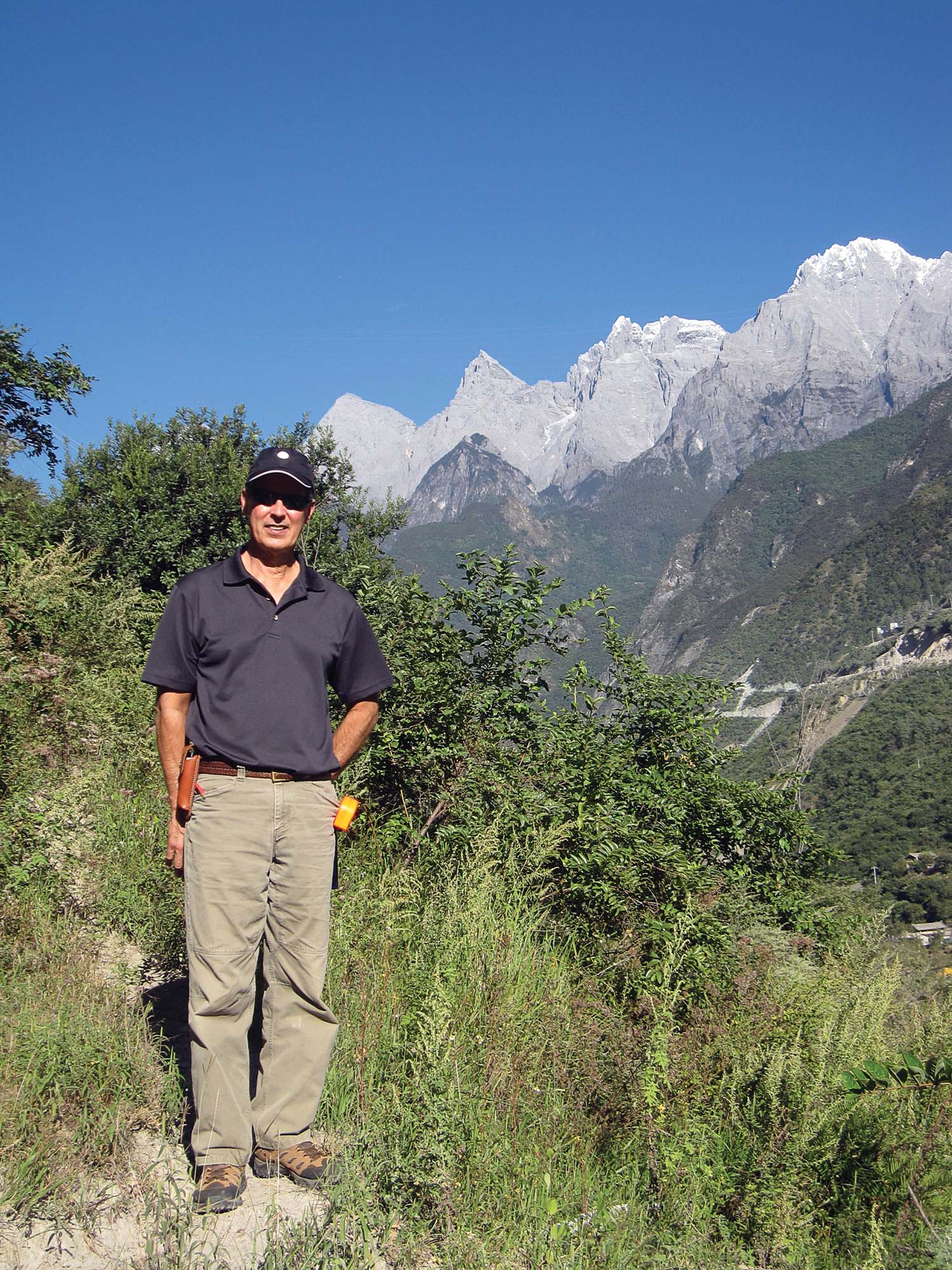
Architect Bruce Johnson says his wife “wasn’t too excited” about the idea of him retiring. But the remote locations of his newest projects — a Tibetan lodge among them — makes that scenario rather unlikely.
Johnson, whose office is in his Biltmore Forest home, has made his name designing environmentally sensitive, upscale primary residences and vacation homes. His work ranges from small rustic cabins in the woods to lakeside retreats and expansive mountain lodges, all sited in high-end locations in the Carolinas, Maine, Florida, and in the Caribbean.
Recently, though, he’s developed a more exotic profile. Besides the mountain lodge near the Himalayas, Johnson’s other project in China is an underwater restaurant.

The architect grew up in Ligonier, a small town in eastern Pennsylvania. His father was a metallurgical engineer in the steel industry and an accomplished artist, rendering scenes in pencil that Johnson says are absolutely photographic in appearance. His brother was a fine-arts major and his mother did drafting work before she married. Johnson’s early boyhood passions centered more around sports, especially golf: his instructor was Arnold Palmer’s father. He then attended Taft, a four-year prep school associated with Yale University. His last two years there, Johnson says, he’d return home in the summers to work in the steel mills, where the education was decidedly more hands-on. “Steel coming out of the furnace quickly turns from glowing red to a dull gray,” remembers Johnson — but that doesn’t mean the ingots have cooled. One day, he made the painful mistake of leaning on one of these gray bars. He was still in agony when one of the old-time union workers suggested he spit on the metal first the next time to see if it sizzled.
For college, Johnson veered away from family history (his grandfather, father, and brother had gone to Yale), choosing the University of North Carolina at Chapel Hill. After attending a six-week-long summer program on architecture sponsored by Carnegie Mellon, he found his direction, eventually earning a Master’s in architecture from North Carolina State in Raleigh.
He worked for one of his professors for a few years before starting, with two partners, Innovate Design/Raleigh, a firm that specialized in energy-conscious commercial and residential buildings. Solar power was on the rise, and Johnson and his partners were excited to incorporate it into their designs.
Ten years in and needing a lifestyle change, Johnson moved to Asheville in 1990 and started his current firm with a focus on residential. His detours kept sharpening, however, and in 2010, Johnson and three partners started a for-profit construction company in Haiti after the island country’s calamitous earthquake, building high-volume, low-cost, indigenous houses using local labor and materials. This venture was interrupted a few years later by political upheaval in the island nation.
But then a client in Lake Toxaway reintroduced Johnson to Ed Knapp, someone he’d known more than 20 years prior. In the two decades since, Knapp had built a construction-materials import/export firm collaborating with companies in China, and was now part of an international design/build firm with several projects underway in Yunnan province.
The architect signed on to help, and made his first trip to China last fall, fascinated by the inherent challenges in scope, distance, language, and cultural differences. “For the last 25 years, I have been focused mostly on custom residences with an average size of 5,000 square feet that I designed alone,” Johnson explains. “The China work involves an international design team and is on the scale of master planning and large commercial developments.”
The Little White Dragon Resort and Fishing Country Club is being planned near Shidian in Yunnan Province, situated among seven lakes yet to be made. The resort will contain a cultural center, hilltop hotel and conference center, spa and pools, and a variety of lodging: fishing cabins, a boutique hotel, and mountain and lakeshore villas.
Resurrecting an idea he’d designed in college 40 years earlier, Johnson suggested the retreat feature an underwater restaurant. “The above-water portion of the restaurant will be a large fishing pier accessed by a walkway from the land,” he explains. The entrance is a Tibetan-style pavilion that acts as a ventilation tower, bringing in sunlight to the entry garden and aquariums below.
“We are basically building a reverse aquarium, with the diners inside and the fish outside,” says Johnson. The proposed shape is a dodecagon — 12 sides of equal size approximating a circular design. And the large windows — he compares them to major tourist aquariums such as the one in Atlanta — present the biggest construction challenge. Patrons will descend one of two stairways to a depth of about 20-25 feet to a reception garden with aquarium walls. “So when you’re dining,” says Johnson, “there will be fish on both sides of you.”
Near the border of Tibet, at the 10,000-foot level of the mountains leading to the Himalayas, Johnson’s other development, the Wilderness Gorge Luxury Hotel, will be terraced to access arguably the world’s most amazing views. Located in Tiger Leaping Gorge Park, the area is so remote that a cog railway will have to be built to carry building supplies and equipment to the site, reveals Johnson.
He’ll return to China this spring, to take both of the grand attractions to the next level and to learn about several more possibilities — including projects in two new national parks.
Although he had some experience with foreign languages (French and Creole) in Haiti, Johnson says it didn’t prepare him for the more complex cultural protocols he’s encountered in China, where he uses interpreters. But so far, he says, all the world-class design opportunities “far exceed” any hurdles.
For updates about the projects and for more information, see brucejohnsonaia.com.
